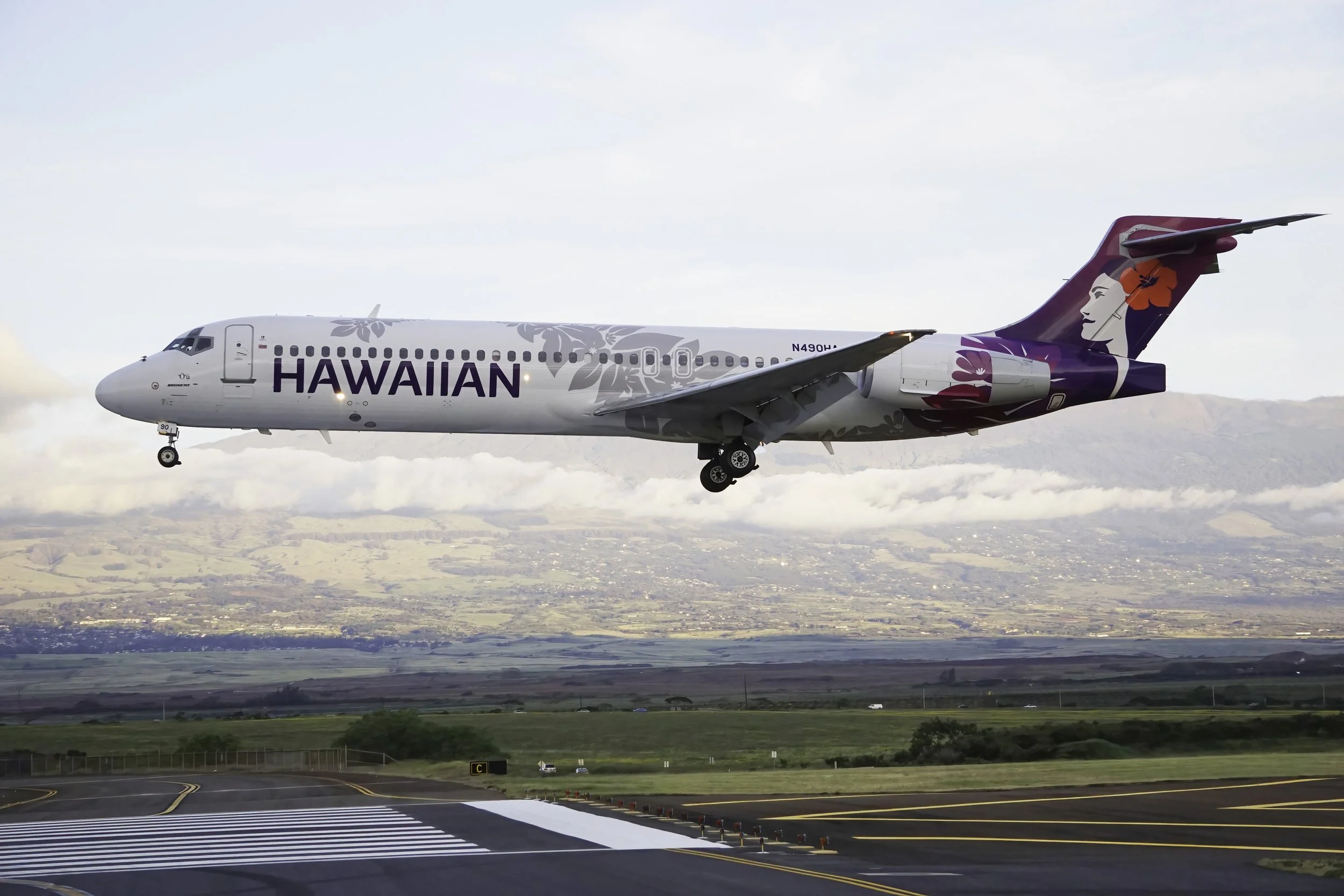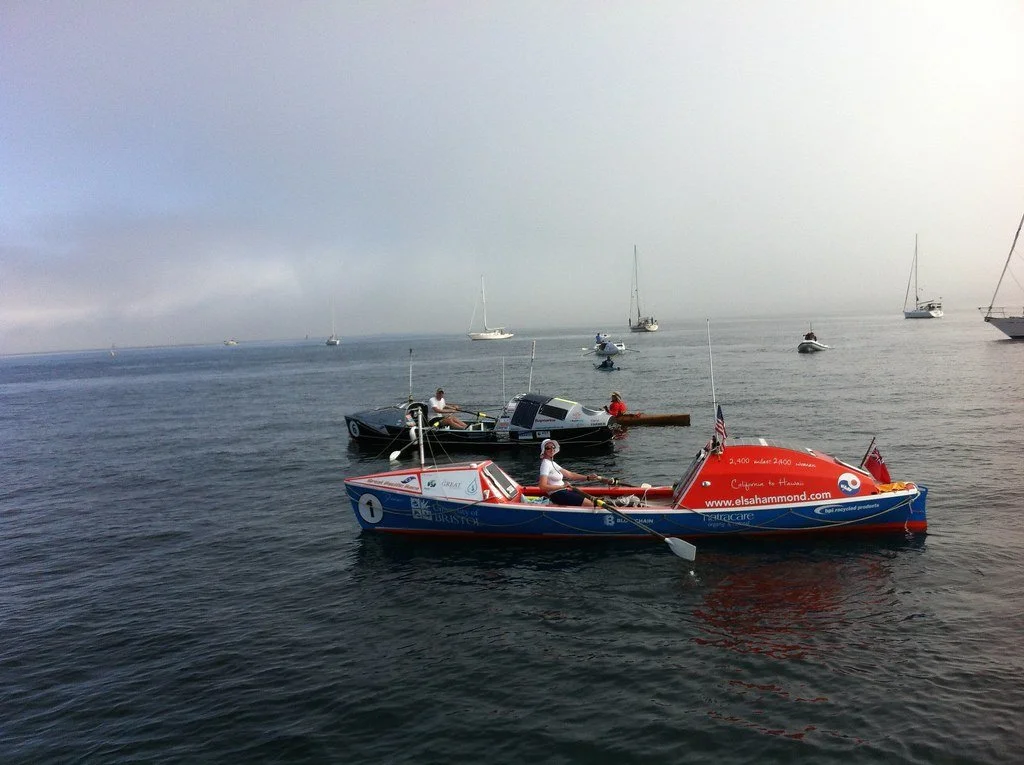Kleigh Carroll
How to visit the Hawaiian Islands while minimizing your environmental and cultural impact.
Hawaiian Airlines B717 Landing in Maui. Bryan S. CC0
It is no secret that the United States has a deeply problematic colonial relationship with the Hawaiian Islands. In 1993, Congress passed a resolution officially apologizing for the “illegal overthrow of the Kingdom of Hawaii” in 1893 and expressed “its commitment to acknowledge the ramifications of the overthrow in order to provide a foundation for reconciliation between the United States and the Native Hawaiian people.” But despite this, the violence associated with land grabs has left lasting effects still felt by Native Hawaiians today. Many are tired of having their land taken for purposes that benefit others, while their indigeneity and culture are overlooked at best and commodified, exoticized and misrepresented at worst.
Since Captain Cook first arrived on the Hawaiian Islands in the late 18th century, the Indigenous population has declined to account for a smaller and smaller fraction of the total population. About 10 million people visit Hawaii each year, amounting to more than seven times the residential population. Julie Au, Education, Research and Outreach director of Aina Momona, a nonprofit that focuses on land restoration and de-occupation in Hawaii, explained that “All of that is linked to tourism because at that time when we became a state, they really started marketing Hawaii as this paradise vacation destination. So we’re not even a normal state. We’re America’s vacation state.” In light of this history, is it possible for tourists to visit Hawaii responsibly, keeping in mind their positionality and the impact they leave on local communities and ecosystems?
ISSUES WITH TOURISM IN HAWAII:
Tourism is Hawaii’s largest driver of revenue, accounting for 21% of jobs. At the same time, the issues associated with tourism are numerous. For one, the overwhelming number of visitors each year contributes to plastic pollution which surpasses Hawaii's capacity for recycling. Tourism infrastructure has also entailed the destruction of habitats and ecosystems to make room for hotels and shopping malls. What’s more, numerous major resort developments have disrupted culturally significant sites, such as the Keoneloa development site in Kauai, which forced the relocation of burial grounds. Visitors often spend their time in large resorts and spaces designed for them without making a serious attempt to connect with local culture. This can contribute to both an environmental and cultural insensitivity to their surroundings and a disconnection from local issues faced by native Hawaiians. While tourism is an important supplier of revenue and jobs, these dollars are often reinvested into the tourism industry rather than the local community. Many resorts are owned and operated by non-Hawaiians while Hawaiian people occupy the lowest-paying service jobs.
HOW TO TRAVEL MORE ETHICALLY:
Responsible, sustainable tourism is possible and can even be an important driver of social change. Aside from the obvious practices, like abiding by the principles of Leave No Trace, following the local rules and signage when visiting particular sites and adequately preparing for excursions so that you don’t need to be rescued, there is more that you can do to earn your right to visitation. Taking a mindful approach to tourism in Hawaii means respecting the natural environment and making a genuine effort to learn about local history and culture. Regenerative tourism initiatives provide alternative ways to visit Hawaii while giving back to local communities. Prince Waikiki, for instance, is a hotel in Honolulu dedicated to regenerative and volunteer tourism. They provide opportunities to have fun while giving back through partnering with local nonprofits working on everything from workforce development programs to historical preservation projects. The Malama Hawaii Program, launched in 2021 by the Hawaii Visitors and Convention Bureau, provides a list of ways to give back on your trip, from beach cleanups to volunteering on local farms. Another way to minimize your environmental impact while traveling is to stay at eco-lodges, places committed to staying carbon-neutral and supporting conservation efforts.
Buying locally is an easy way to make sure your dollars are staying in the community. This looks like eating at locally-owned restaurants, staying at locally-owned hotels and shopping at locally-owned grocery stores. Britney Alejo-Fishell is the owner of a store specializing in traditional lei and lei-making workshops in Makawao, Maui. She claims that for many tourists visiting her store, it has “changed their view of this place.” She emphasizes the power of exploring outside of resorts and tourist traps and supporting small businesses. “This is a way that tourists can come learn but also play a part in helping us heal.”
To learn more about ethical travel in Hawaii, Go Hawaii provides helpful tips. The book “Detours: A Decolonial Guide to Hawaiʻi” by authors Hōkūlani K. Aikau and Vernadette Vicuna Gonzalez offers perspective on Hawaii's history and imagines new ways for visitors to move through the landscape.
Kleigh Carrol
Kleigh is a student at UC Berkeley studying Geography and Journalism. She hopes to integrate her skills in these fields in pursuit of a career in journalism. She is passionate about being outside, exploring, and writing in all of its forms.













